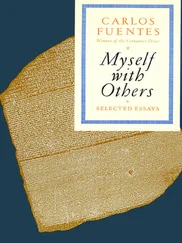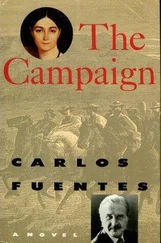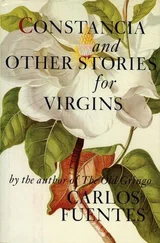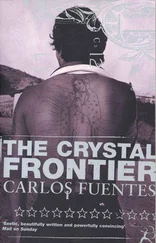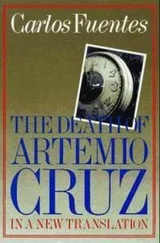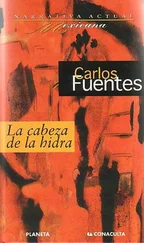To what do the young widow and the grandmother of Santiago, young rebel leader, have a right? If they wish, they may go to the morgue and identify the body. As a concession to Don Danton, personal friend of President Gustavo Díaz Ordaz. They may see him, but they may not remove or bury him. No exceptions. There will not be five hundred funeral processions on October 3, 1968, in Mexico City. It would make traffic impossible. It would break the rules and regulations.
Laura and Lourdes entered the ice shed, where a strange pearly light illuminated naked bodies laid on wooden pallets mounted on sawhorses.
Laura feared that death would strip away the personalities of these stripped victims, victims of the sedition of a President gone mad with vanity, overweening power, fear, and cruelty. That would be his final victory.
“I haven’t killed anyone. Where are the dead? Come on, let them speak out. Let them talk. Me kill anyone?”
They weren’t the dead for the President. They were agitators, subversives, Communists, ideologues of destruction, enemies of the nation, the nation incarnated in the presidential Sash. Except the eagle, that night at Tlatelolco, flew off the Sash and away, flew far away, and the serpent, ashamed, thought it better to shed its skin, and the cactus grew wormy, and the water of the lake once again caught fire. Lake of Tlatelolco, throne of sacrifices, where the Tlatilca king was thrown from the top of the pyramid in 1473 to consolidate Aztec power, from the top of the pyramid the idols were cast down to consolidate Spanish power, from all four sides Tlatelolco was besieged by death, the tzompantli , the wall of skulls cemented together in an immense funeral necklace, thousands of skulls forming a defense and warning about power in Mexico, raised up, time and again, over death.
But the dead here in the morgue were singular, there wasn’t one face like another, not one body identical to another, not even uniform postures. Each bullet had left a different rosette on a murdered man’s chest, head, thigh; each man’s sex was in different repose, each woman’s sex a singular wound, that difference was the triumph of the young people sacrificed in their defeat of a violence that went unpunished, a violence that knew itself to be absolved beforehand. The proof was that two weeks later, President Gustavo Díaz Ordaz inaugurated the Olympic Games with the release of a flock of peace doves and with a smile of satisfaction as wide as his bloody snout. In the presidential box, covered with smiles of national pride, were Santiago’s parents, Don Danton and Doña Magdalena. The nation had returned to order, thanks to the President’s disciplined energy.
When they recognized Santiago’s body in the improvised morgue, Lourdes, in tears, threw herself on the naked body of her young husband, but Laura caressed her grandson’s feet and hung a tag on his right foot:
SANTIAGO THE THIRD
1950  1968
1968
A WORLD TO BE MADE
Clasping each other, the old woman and the young woman looked at Santiago for the last time and walked away, sharing a diffused, unplaceable fear. Santiago had died with a grimace of pain. Laura lived wishing that the dead boy’s smile could restore peace to his body and to her.
“It is a sin to forget, a sin,” she repeated to herself over and over, telling Lourdes, don’t be afraid, but the young widow did feel fear, every time there was a knock at the door, she wondered, could it be he, a ghost, a murderer, a mouse, a cockroach?
“Laura, if you had the chance to put someone in a cage like a scorpion and leave him hanging there without bread or water—”
“Don’t think such thoughts, daughter. He doesn’t deserve it.”
“What do you think about, then, Laura, aside from him?”
“I think there are those who suffer and because of their suffering they cannot be replaced.”
“But who takes on the pain of the rest, who is exempt from that obligation?”
“No one, daughter, no one.”
The city had been turned over to death.
The city was an encampment of barbarians.
Someone was knocking at the door.
LAURA, WHO HAD SEEN EVERYTHING with her camera, stopped one August day opposite the mirror in her bathroom and asked herself, How do people see me?
She kept, perhaps, that memory of a memory which is our past face, not the simple accumulation of years on our skin, not even the layers of years, but a kind of transparency: this is how I am, as I see myself right now, how I always was. The moment can change but it’s always just one moment, even if in my head I keep everything that belongs in my head; I always sensed, but now I know, that what belongs to the mind never leaves it, never says goodbye; everything dies except what lives forever in my mind.
I’m the girl from Catemaco, the San Cayetano debutante, the young wife in Mexico City, the loving mother and unfaithful wife, Harry Jaffe’s tenacious companion, refuge for my grandson Santiago, but most of all I am Jorge Maura’s lover; among all the faces in my existence, his is the one I keep in my imagination as the face of my faces, the face that contains all faces, the image of my happy passion, the face that supports the masks of my life, the final bones of my features, the one that will remain when the flesh has been devoured by death …
But the mirror did not reflect the face of Laura Díaz during the 1930s, which she, knowing it had been transitory, imagined was eternal. She read a lot about the ancient history and anthropology of Mexico the better to understand the present she was photographing. Ancient Mexicans had the right to choose a death mask, to put on an ideal face for the journey to Mictlan, that other world of the Indians, both inferno and paradise. If she were an Indian, Laura would choose the mask of her days of love with Jorge and superimpose it on all the others, those of her childhood, her adolescence, her maturity, and her old age. Only the mask of her son Santiago’s death agony could compete with that of Jorge Maura’s amorous passion, which yielded the desire of happiness. This was her mental photograph of herself. That’s what she wanted to see in the mirror on that August morning in 1970. But that morning the mirror was more faithful to the woman than the woman herself.
She’d taken great care with her appearance. Very early in life, observing Elizabeth García-Dupont’s ridiculous changes in hairstyle, she decided she’d choose a hairstyle for good and never give it up. Orlando’s circle confirmed this: you change your hair, and right away you feel pleased and renovated, but then people notice that your face has changed, look at those crow’s-feet, look at those creases in her forehead, my my my, she’s made the leap into old age, she’s worn out. So Laura Díaz — after toying with the idea of keeping the bangs she’d worn as a girl to cover her forehead that was too high and too wide and to shorten a face that was too long — decided, after meeting Jorge Maura, to reject the hairstyles à la garçon of Mexico’s Clara Bows, or the platinum-blond ones of the silky Jean Harlow, or the undulating marcelled tresses of the local Irene Dunnes; she pulled her hair back, revealing her clear forehead and her “Italian” nose, as Orlando called it, prominent and aristocratic, fine and nervous, as if it never stopped inquiring about things. And she rejected the bee-stung lips of Mae Murray, Erich von Stroheim’s merry widow, and Joan Crawford’s immensely wide mouth, painted like a fearsome entryway into the hell of sex, and kept to her thin lips, with no lipstick, which accentuated the sculptured Gothic look of Laura Díaz’s head, she was descended after all from people of the Rhine and the Canary Islands, from Murcia and Santander. She bet everything on the beauty of her eyes, which were of a chestnut, almost golden color, greenish in the evening, silvery during the open-eyed orgasm Jorge Maura asked of her, I come when I see your eyes, my love, let me see your open eyes when I come, your eyes excite me, and it was true, sexes aren’t beautiful, they’re even grotesque, Laura Díaz says to her mirror this morning in August 1970, what excites us are eyes, skin, the reflection of the sex in the hot eyes and sweet skin that draws us closer to the inevitable thicket of sex, the lair of the great spider that is pleasure and death.
Читать дальше

 1968
1968
